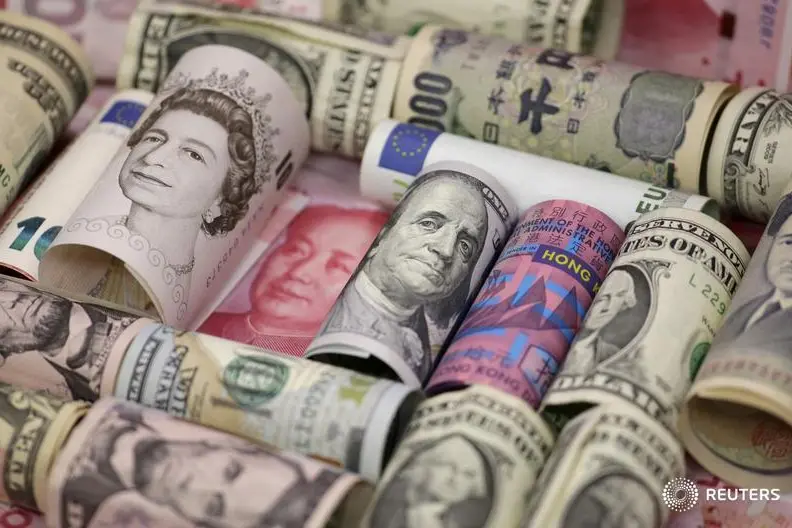PHOTO
LONDON - The last time banks had to pay this much to borrow dollars from each other over near risk-free borrowing costs, the euro zone's very existence was in peril. The time before that, the global financial system was slowly coming back from the brink of collapse.
This time, there is no evidence that the rapid widening of the so-called Libor-OIS spread reflects systemic risk in the banking system. But it does suggest banks might have to get used to paying more to get their hands on dollars.
The premium of three-month London interbank offered rate (Libor) over the overnight indexed swap rate (OIS), typically seen as a gauge of money market stress, reached 53 basis points on Friday, the widest gap since January 2012.
By any measure, the speed with which the spread has widened is remarkable. In mid-November it was as low as 11 bps.
There's no single explanation for this, but analysts point to a surge in issuance of short-dated government debt, falling demand for short-dated corporate and bank debt and U.S. tax reform that may also be encouraging the repatriation of offshore cash from U.S. firms.
Even if the spread widening runs out of steam or soon reverses, banks are having to pay more for dollars. Yet, so far at least, the impact on banks has been imperceptible.
Since the Libor-OIS spread began to blow out in mid-November, the S&P 500 and Dow have both risen around 7 percent. The U.S. banking index has comfortably outperformed, up 12 pct over the period.
Nor does the widening spread appear to reflect a mad scramble among non-U.S. financial institutions for dollars.
For a start, the dollar has fallen since mid-November, down 4 percent against a basket of major currencies in the last four months.
There are precious few signs of increasing stress in the interbank dollar lending markets. The cross-currency basis, which measures the cost to companies and financial institutions of swapping foreign currencies into U.S. dollars without the exchange rate risk, has fallen too.
The three-month euro cross currency basis is trading at minus 31 basis points and the Japanese yen cross currency basis minus 27 basis points, both reflecting the smallest premium for dollars in two months. On Nov. 15, the euro and yen basis were both around minus 52 bps.
It would appear that Japanese and euro zone banks aren't facing any difficulty in accessing U.S. dollars. Nor are their share prices suffering: Japanese financials are up 6 pct since Nov. 15 and European banks are up 10 pct in dollar terms, both outperforming their broader indices.
The Fed's dollar swap line with other major central banks is also worth bearing in mind. The Fed charges a central bank a 50- basis-point-premium on the three-month OIS to tap the swap facility.
There are good reasons why this facility might not be used. Its seven-day term may not match many overseas banks' dollar funding needs, and there's a stigma associated with it because it could raise market concerns about a country's banking system
Yet the 50 bps could still act as a psychological level above which the market doesn't stray too far above.
Analysts at Citi reckon changes to U.S. government funding requirements in the coming weeks and months could provide some respite. They estimate that net T-bill issuance in April will be a negative $36 billion as U.S. tax revenues stream in, which should mean a potentially bigger pool of funds available for short-term bank paper and money market funds.
But they also warn that Libor-OIS could widen further and general market sentiment could sour if banks' excess reserves at the Fed start to fall. That would directly reduces capital availability for FX swaps and widen cross-currency basis rates.
"The dramatic rise in dollar LIBOR-OIS is contributing to a general increase in nervousness around risk assets. We think this process has further to go," Citi's Matt King and his team wrote in a note on Monday.
(Reporting by Jamie McGeever, editing by Larry King)
© Reuters News 2018












